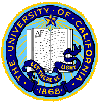 |
Scott Jordan | |
|
|
Our focus in this work is on the fundamental relationship between network resources and the QoS that the network can support. A widely used folk theorem is that multiplexing increases efficiency, and that the magnitude of the efficiency gain depends on the burstiness of the traffic, but often these relationships are often difficult to analytically characterize.
The first paper addresses the gains obtained by multiplexing bursty traffic operating under QoS contraints. The results establish a basis for the belief that although bursty sources require more bandwidth, multiplexing gains are increasing with burstiness. When heterogeneous sources are partially multiplexed, it also demonstrates that it is most efficient to group similar source types.
Multiplexing Gains in Bit Stream Multiplexors (with I. Sidhu), IEEE/ACM Transactions on Networking, vol. 3 no. 6, December 1995, pp. 785-797.
The second paper addresses a simple question: how do the optimal allocations of bandwidth and buffer vary with the number of sources? For on/off fluid flows, the optimal buffer allocation is proven to be proportional to the square root of the number of sources, and hence that allocation of a fixed buffer, or allocation of buffer linearly with the number of sources, can lead to substantial inefficiency.
The Variation of Optimal Bandwidth and Buffer Allocation with the Number of Sources (with K. Jogi, C. Shi and I. Sidhu), IEEE/ACM Transactions on Networking, vol. 12 no. 6, December 2004, pp. 1093-1104.
The third set of papers address the relationship between the network capacity and the number of data users that can be supported under a QoS criterion. Two types of QoS are considered: the average rate achieved and the probability that the rate is above a specified threshold. These results can be used to establish the cost associated with a QoS contraint on the basis of the network resources required.
Throughput in Processor-Sharing Queues (with N. Chen), IEEE Transactions on Automatic Control, vol. 52 no. 2, February 2007, pp. 299-305.
Violation Probability in Processor-Sharing Queues (with N. Chen), IEEE Transactions on Automatic Control, vol. 53 no. 8, September 2008, pp. 1956-1961.
Portions of this work were supported by DARPA and NSF. Any opinions, findings, conclusions or recommendations expressed in this material are those of the author(s) and do not necessarily reflect the views of the National Science Foundation, DARPA, or IEEE. This material is presented to ensure timely dissemination of scholarly and technical work. Copyright and all rights therein are retained by authors or by other copyright holders. All persons copying this information are expected to adhere to the terms and constraints invoked by each author's copyright. One print or electronic copy may be made for personal use only. Permission must be obtained from the copyright holder for systematic or multiple reproduction, distribution to multiple locations via electronic or other means, duplication of any material in these papers for a fee or for commercial purposes, modification of the content of these papers, reprinting or republishing of this material for advertising or promotional purposes or for creating new collective works for resale or redistribution to servers or lists, and to reuse any copyrighted component of this work in other works.